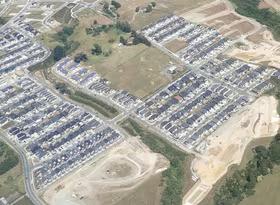Articles
The labour force participation rate has been consistently rising over the past 30 years in New Zealand, providing a welcome boost to the labour supply. But can participation keep rising? Read
Stats NZ released their latest subnational population estimates, providing us with an annual glimpse into how New Zealand’s population is growing around the country. In this article, we highlight the overall trends of the 2024 estimates and pull out interesting results from specific cities or districts. Read
The challenges of structural ageing and population decline are set to shine through again with subnational population estimates due next month. This article explores previous periods of population decline – looking at how effective migration is at holding back decline, how we should plan for decline, and what has happened to areas which have experienced population decline in our history. Read
New Zealanders’ knowledge of Asia is at an all-time high. In Asia New Zealand Foundation's annual New Zealanders' Perceptions of Asia 2024 survey, 59% percent of respondents to the 2024 survey reported knowing ‘at least a fair amount’ about Asia, up from just 33% ten years ago. Here we look at the numbers behind the rising Asian population and workforce in New Zealand. Read
In this article Nick Brunsdon explores the topic of population loyalty, by looking at Stats NZ’s Administrative Population Census (APC) data on usual residence one and five years ago. Read
The United Nations released its biannual World Population Prospects earlier this month, a global population projection to the year 2100. In this article, we explore the latest projections for the world’s population, and what the trends might mean for New Zealand’s migration. Read
Economics consulting firm Infometrics is pleased to announce that Nick Brunsdon, Principal Economist and Lead Demographer, has been appointed to our board of directors. Read
Migration is a persistently hot topic and tends to dominate discussion around trends in population growth, taking the limelight away from the other components of population change. However, New Zealand’s fertility rate recently reached a record low, so this article explores trends in fertility and what’s driving it. Read
Last week Stats NZ released the first tranche of data from the 2023 Census, an exciting milestone for anyone with a thirst for regional or socioeconomic data. With the prior Census held in 2018, this represents the first Census data since the start of the COVID-19 pandemic. In this article, we dive into the first tranche of data, explain why the good stuff is yet to come, and raise a note of caution for population comparisons with the first tranche of data. Read
Migration is a lot like rain. When we receive a lot of migration (or rain), having prepared and invested for it, and directed it into the most needed areas, it can make us all better off. Conversely, receiving more migration (or rain) than we are ready for, in the wrong places, can make things worse. Knowing it could rain but never buying a raincoat seems to be an unfortunately good analogy for how we currently seem to approach migration. Read









